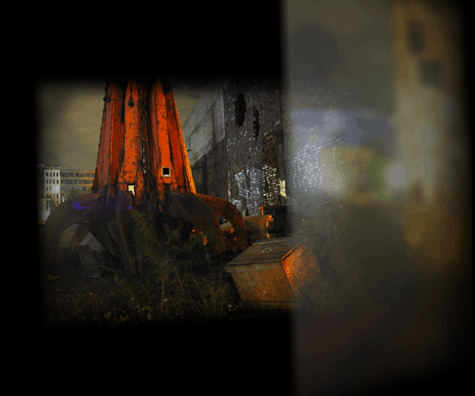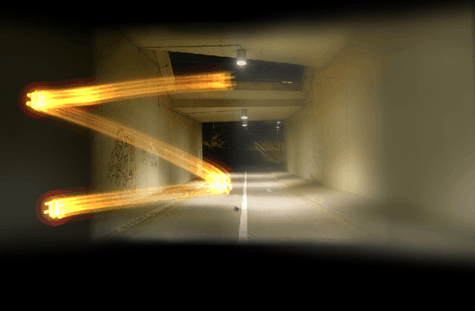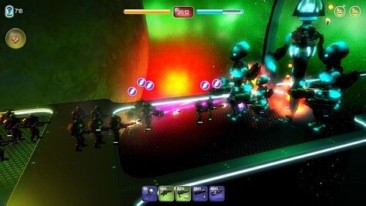Developer Summary
Trauma tells a story of a young woman who survives a car accident. Recovering at the hospital, she has dreams that shed light on different aspects of her identity – such as the way she deals with the loss of her parents. Trauma lets you experience those dreams in an interactive way, reminiscent of Point-and-Click Adventure Games. It builds upon this established formula by introducing a gesture-based interface, real-time 3D technology for dynamic level layouts, unique photographic visuals and a level design philosophy that focuses on creating a rich experience rather than an elaborate puzzle challenge. Combined with the unconventional story, it is aimed to be a compact and deep game for a literate and mature audience.
What We Think
They say that films and games have a dreamlike quality, and this strikes potent and true with Trauma. The interactive game emphasizes storytelling and visceral experiences that resonate through gradual interactive progression. Rather than asking the player to apply a brainteaser rationale to the likes of a physics-based puzzle, the game focuses on revealing emotional, internal states by exploring visual perspectives. In Trauma, every chime of music and framed image count towards an evocative atmosphere and intimate discovery of the psychology of a young woman coming to grips with her experience of the violent car crash.

To this end, Trauma succeeds as a poetic exploration through both visual and aural themes. The game allows you to travel through a three-dimensional dream world as seen through photographic snapshots. You learn new ways of interacting with your environment by finding hidden polaroids that teaches you to draw light-symbols to manipulate objects in the dream-world.
Here, attention to what is framed by the image – and consequently, what falls outside of the frame – is key to solving puzzles in the dream-world. You take note of what is suggested just outside of the immediate frame by “tilting” your perspective, upon which the beep of a camera shutter’s auto-focus is heard. Other photography themes persist in other little details: the light-symbols that you draw over the scene resemble light paintings, a streak of overexposed light that interrupts the night-time dreamscape.

Over time, you learn more about the protagonist in a manner that cannot be summarized into key motivations and set social roles; We find out that she’s a student because she’s anxious about going home for her exams, although this barely scrapes the surface in telling us about her psychological being. Her voice-overs, which guide you through the dreamscapes, are reflexive and meditative rather than factual. She comments on everyday memory, such as childhood fixations and old paths.
Because each player may discover these snippets in any randomized order, there is no straight-forward narrative. There is a visual poetry in not knowing how the dream begins, nor where it ends, and each dream refers to the others in a cyclical manner.
The game entices out-of-order playing of the four separate dream-worlds, as there are multiple ways to “solve” the dream puzzle. Early on, it becomes apparent that there is a replay value, which mimics the experience of recurring dreams. You are always taken back to the game’s main menu when you transition between these dreamscapes. This main menu looks like a portfolio of an online photo album, suggesting real-world order in a direct contrast to the dichotomous nest of pictoral memories that make up our dreams.

For example, some dreamscape photographs may overlap to form more of a panorama, while others create a less seamless transition between one perspective and another, similar to a jarring jump-cut in cinematography. Rather than being a slip-up, this intentional game craftsmanship augments its sense of the surreal. Dreams rarely tell their secrets in order.
Instead, there are often unprovoked shifts in perspective that makes it feel like the gravity of the place isn’t quite right, or that the play of lights and weights of a space are hesitating in their rationale. The absence of any realistic human figures in the dreamscape not only lends a pervasive feeling of loneliness, but also cause environments to be personified and objects having their own respective weights.
Befitting psychological uncertainties, it is as though the dreamscape has a life of its own. The chiming musical score in minor key rounds out a beautiful cacophony that uneasy, recurring dreams generate.

By emphasizing dreams as the mainstay experience for the protagonist after the fatal accident, we get the sense that there are no tangible or overt solutions in everyday life that may help heal her of her psychological wounds. The young woman has to extract her sense of self from dreams and photographs. Both are artifacts that are constructed through memory. The game’s agency focuses on how to make sense of memory rather than to order the external world (as, to use a conventional example, “with guns blazing”).
In so doing, Trauma suggests a play of memory: the interpretation of past events depend on how it is actively ordered and disassembled in subjective memory. We’ve often seen mis-interpretation of events cumulate to a climax in melodrama; Trauma uniquely keeps interpretations open to multiple narrative impulses, thus subverting an obvious tragic or hopeful divide in its outcome.

Amongst other subversive interpretations, Trauma illustrates how surviving a violent accident can leave a fatality of a different kind. The young woman’s perspective is fixed on dreams and subconscious memories, rather than living in the present and everyday world. Due to its presentation, Trauma is also an antithesis to many games and other narrative media that refuse to write their female protagonists with complex emotions and motivations, perhaps even partly unarticulated to herself.
Trauma sensibly relies on dreams and photography to construct its own poetic language, in order to make sense of unspeakable, irretrievable memories of pain. The resultant experience is unsettling as it is sublime.
Trauma has garnered international acclaim as the IndieCade 2010 Finalist, European Innovation Game Award 2010 Finalist, and the Independent Games Festival 2010 Finalist in three categories: Seumas McNally Grand Prize, Excellence in Visual Art, and Excellence in Audio.
Get Trauma on Steam
Get Trauma on Official Page
[xrr rating=”4.5/5″]






Looks pretty cool! Lovely visuals.
Thanks for the comment! Trauma is definitely a treat with its photographic visual design.